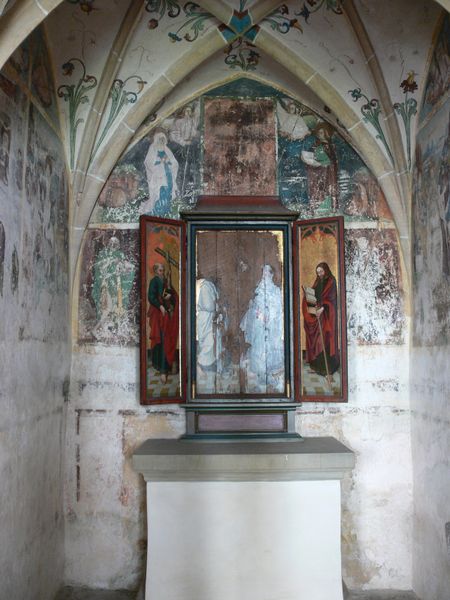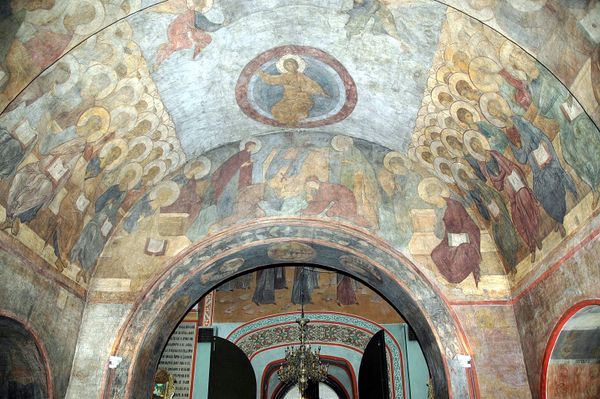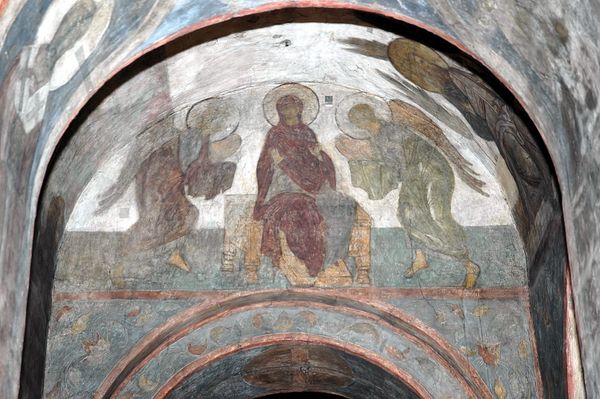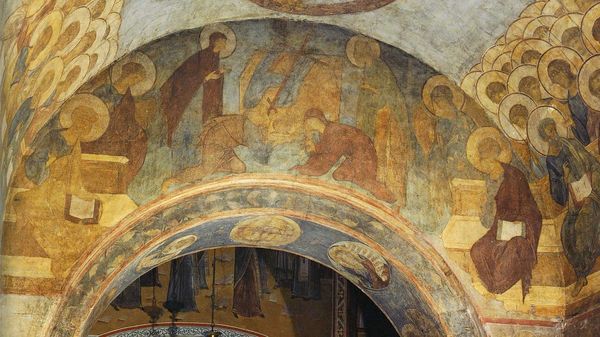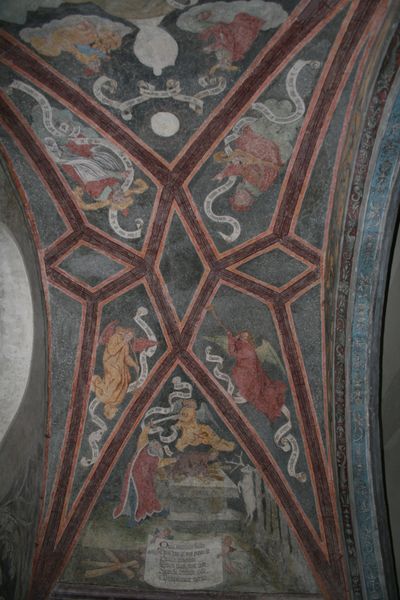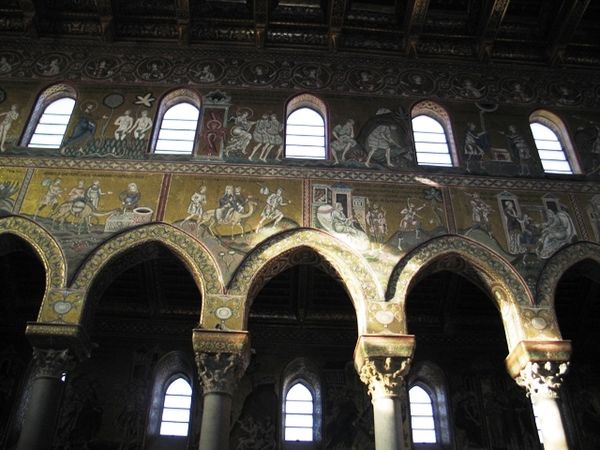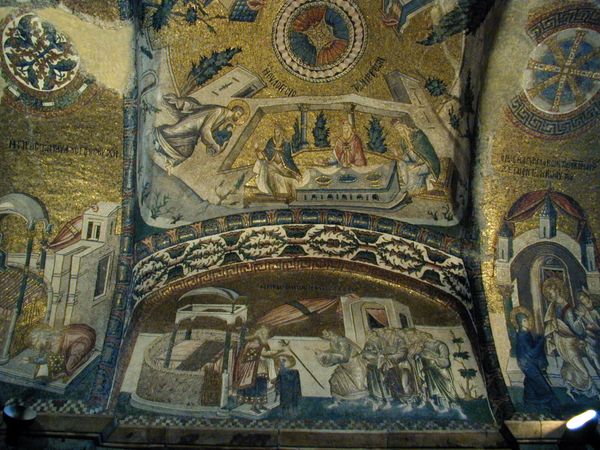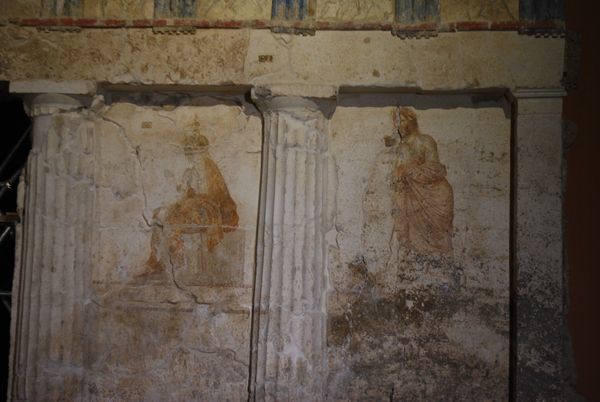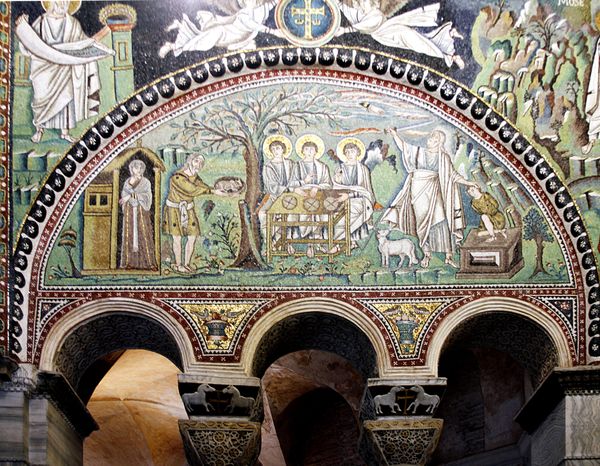
painting, fresco, architecture
#
medieval
#
narrative-art
#
painting
#
sculpture
#
holy-places
#
figuration
#
historic architecture
#
fresco
#
traditional architecture
#
history-painting
#
italian-renaissance
#
architecture
#
historical building
#
statue
Copyright: Public domain
Curator: Looking at this fresco by Lo Scheggia, titled "Church of San Lorenzo (San Giovanni Valdarno), Toscana, Italy," created in 1457, what strikes you most immediately? Editor: It has a haunting, fragmented feel, almost like a memory struggling to hold its form. The way the images are arranged in a grid also implies something very organized, with narrative compartments almost, which doesn't quite resolve with that ghostliness. Curator: The grid is significant. We see this architectural framing of holy figures and narrative scenes used to convey hierarchies of importance and, notably, as a form of visual education within a religious context. The church itself functioned as a key social and political center during that era. It’s an assertion of power and faith manifested materially. Editor: Absolutely. And thinking about its social impact then, I wonder about its representation of faith—was it primarily for those in power, to remind them of their place within the divine order, or was there something else going on, maybe some element of communal aspiration it played into? It is hard not to note its damage... Curator: Indeed, it raises interesting questions about the purpose and reception of such artwork. One thing is certain: while the condition of this painting has decayed considerably over the centuries, we are able to ascertain the intentional creation of imagery and the construction of symbolic, spatial arrangements that had particular cultural and societal value for a 15th century population in San Giovanni Valdarno, Tuscany, Italy. Editor: And thinking about today, in the gallery: there's almost a clash when putting the fragmented composition into conversation with contemporary notions of identity. How do you think this imagery confronts us, when compared to similar forms of statuary and depiction today? Do they resonate, or simply haunt? Curator: It is impossible to state definitively as to the viewer. This work certainly sparks curiosity regarding cultural shifts in both its style and message, leaving much to contemplate, both inside and outside the bounds of this gallery. Editor: Yes, certainly. Something about that fragility invites speculation, maybe about the stories these churches embody, or how those stories changed over time, not just due to environmental conditions.
Comments
No comments
Be the first to comment and join the conversation on the ultimate creative platform.
